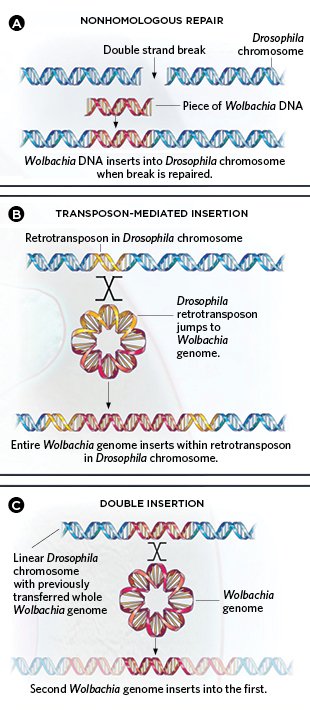One of the most well-studied examples of lateral gene transfer (LGT) between microbe and animal is the transfer of DNA from an intracellular Wolbachia endosymbiont to its Drosophila host. Bacterial DNA may enter the cytoplasm of the Drosophila cell via bacterial cell lysis (1) or a type IV secretion system (2). Once in the cytoplasm, some or all of the bacterial genome can be integrated into the fly genome (3). As long as the host remains colonized by its Wolbachia endosymbiont, LGT can continue and Wolbachia DNA can accumulate in the Drosophila genome.
 © EVAN OTO/SCIENCE SOURCE
© EVAN OTO/SCIENCE SOURCE
Mechanisms of DNA Integration
Just how Wolbachia DNA inserts itself into the Drosophila genome is unclear. Three likely mechanisms include nonhomologous repair of a double-strand break (A), insertion of a fly retrotransposon into the Wolbachia genome followed by homologous recombination with another copy of the retrotransposon in the fly genome (B), and/or homologous...
Interested in reading more?





